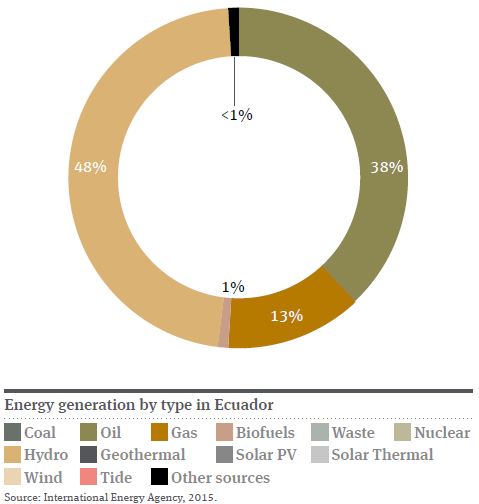The regulatory framework for electricity is the Electric Law of 2015, which explicitly states an objective of promoting renewable energy sources, including solid-waste biomass. This law establishes that the Ministry of Electricity and Renewable Energy (Ministerio de Electricidad y Energía Renovable – MEER) is the governmental entity in charge of the regulation and planning of the entire power sector of the country, and hence carries the responsibility of promoting renewable energy. The law sets out preferential regulations for renewable energy, which are still under development by the newly created electricity agency (ARCONEL) and are expected to be issued in the second half of 2015. Previously, the Electric Law of 1996 mandated the now disbanded National Electric Council (CONELEC) to promote renewable energy through special dispatch regulations.
From 2000–2015, Ecuador had a feed-in tariff system to support renewable electricity deployment. The feed-in tariff evolved over time in terms of duration, rates and technologies included. In 2013, Regulation CONELEC 001/13 removed solar PV from the feed-in tariff and set overall technology-specific capacity limits for wind, biomass and biogas, CSP, ocean energy and geothermal installations eligible for the tariff. In 2014, Resolution CONELEC 014/14 maintained the feed-in tariff only for biomass and biogas, with differentiated rates for the first time, and for hydropower smaller than 30MW.
Small-scale generators smaller than 1MW do not require a permit for operation (Decree 1581 of 1999). However, in order to benefit from the feed-in tariffs, they needed to be registered with the CONELEC. The procedures for registration of small projects were established in 2008 by Regulation CONELEC 009/08. In 2013, Regulation CONELEC 002/13 superseded the 2008 regulation, and introduced two payments: a registration guarantee of US$7,000 for projects smaller than 500kW and US$15,000 for projects larger than 500kW; and an execution guarantee of one per cent of the total project cost.


